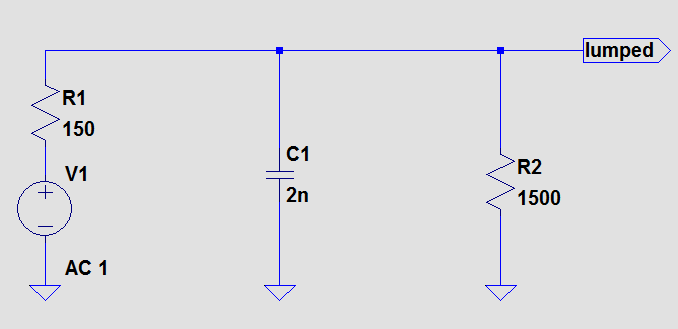
There is an assumption made about cables, particularly in the microphone implementation, that at the upper limits of frequency the response will tend to roll off because of capacitance. This is in fact not the case, and the reason is that the model - called the lumped model - has exceeded its limit of applicability. Once the point is reached where the cable starts having an appreciable effect, then the distributed model (transmission line model) must be used. It would be helpful if this model could be used at all frequenies because it has no sensible limit of applicability.
Examined here is a microphone cable about 400 feet long, which conventional wisdom says should have started rolling off at the top end - not by much, but it will have started. We have:
Mic impedance 150 ohms
Cable capacitance 2 nF
Preamp impedance 1500 ohms

Looking at the response of this circuit we see
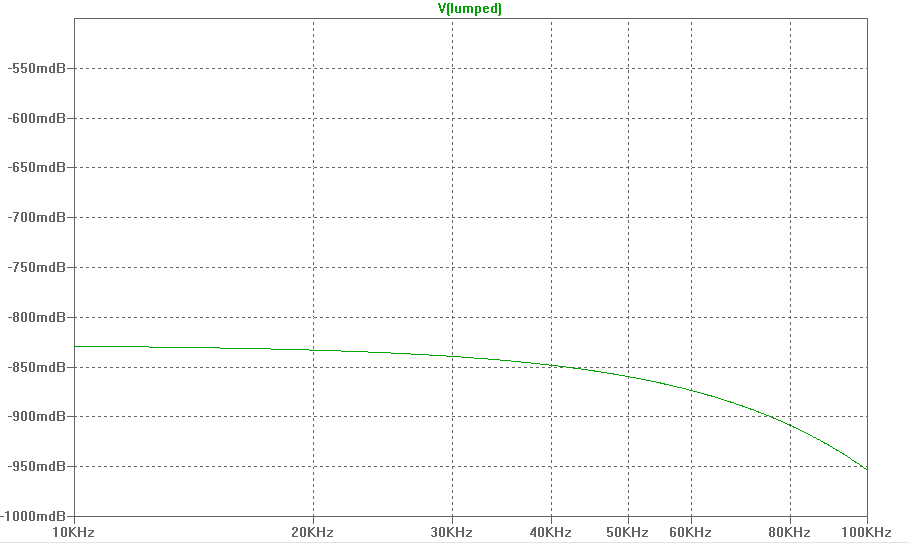
So all as we would expect. But when we use a real cable model, whiich is a distributed network of inductance and capacitance:
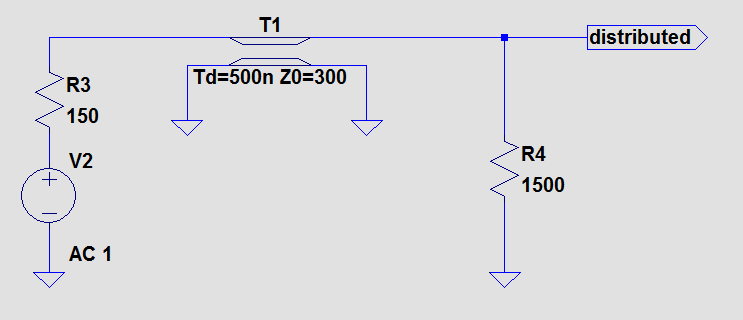
we see the true response, which is
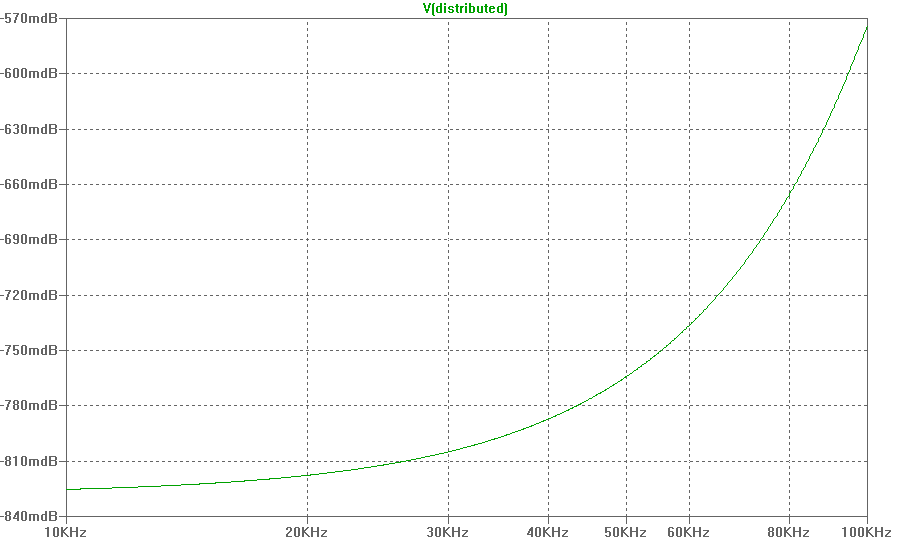
Just for interest, we can look at the two together, but up to 10MHz to see what happens in the limit. This is valuable because some believe that the cable can attenuate high frequency interference signals.
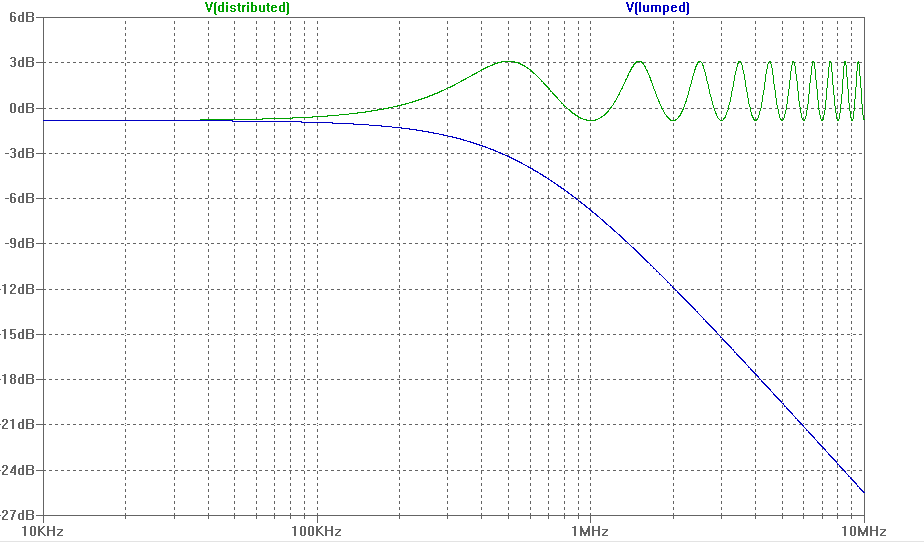
Interesting here is not only the fact that the response does not drop away, but it peaks intermittently. This is because it improves the match between mike and mixer at these wavelength-related frequencies.